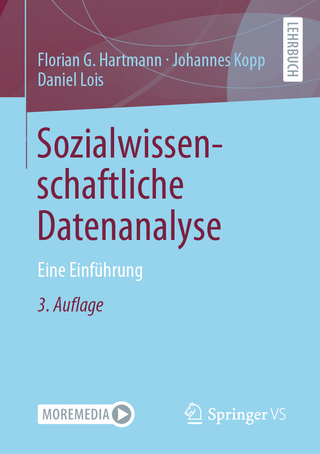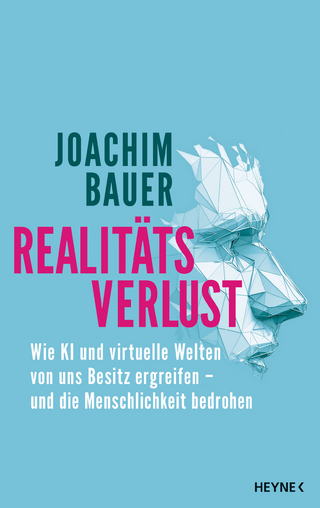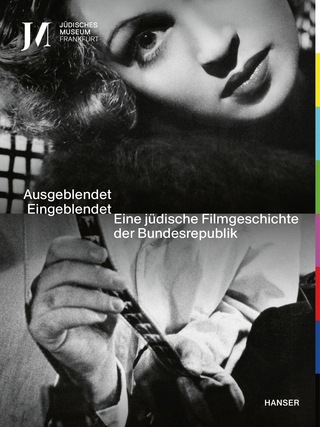
The Prison of Time
Bloomsbury Academic USA (Verlag)
978-1-5013-8060-0 (ISBN)
Similarly, when we watch a film, the screening time has a well defined beginning and end, and screening and diegetic time and their relations, together with narrative and stylistic techniques, determine a time within the time of our life with its own rules and exceptions. Through the close analysis of Stanley Kubrick’s, Adrian Lyne’s, Michael Bay’s and Quentin Tarantino’s oeuvres, this book discusses the overall ‘dominating’ time of their films and the moments during which this ‘ruling’ time is disrupted and we momentarily forget the run toward the diegetic future – suspense – or the past – curiosity and surprise. It is in these very moments, as well as in our own lives, that the prison of time, through which the film is constructed and that is constructed by the film itself, crumbles displaying our role as spectators, our deepest relations with the film.
Elisa Pezzotta is Cultrice della Materia of Cinema at the University of Bergamo, Italy. She has participated at and co-organized several international conferences. She is the author of Stanley Kubrick: Adapting the Sublime, and of articles published on Cinergie, Elephant & Castle, Adaptation, Offscreen, Journal of Adaptation in Film & Performance, and Wide Screen. She co-edited special issues on Cinergie, Historical Journal of Film, Radio and Television, and Elephant & Castle. Her main interests are Kubrick Studies, Adaptation Studies and time in films.
Introduction
Chapter 1: Of Times – Temporalities
1.1 Fabula, Sujet, Story and Plot
1.2 The Order of the Film and Chronological Order of Diegetic Events
1.3 The Duration of Represented and Representational Time
1.4 Temporalities
Chapter 2: Stanley Kubrick’s Temporal Revolution
2.1 The Emergence of Rhythm in Photographs and Photo-Essays
2.2 Experimenting with Narrative Schemas and Style in Shorts
2.3 Staging Time: Fear and Desire (1953)
2.4 Between Classical and Art-cinema Narration
2.4.1 The Order of Represented and Representational Time: Killer's Kiss (1955) and The Killing (1956)
2.4.2 Different Diegetic Times: Paths of Glory (1957) and a Virtuoso Style, Spartacus (1960) and Massive Configurations
2.4.3 Interruptions in Diegetic Time: Lolita (1962) and Dr. Strangelove or: How I Learned to Stop Worrying and Love the Bomb (1964)
2.5 Art-cinema narration. Beyond classical diegetic time
2.5.1 Slowness
2.5.2 Musical moments
2.6 Conclusion
Chapter 3: The Play of Suspense and Eroticism in Adrian Lyne
3.1 Foxes (1980) and Flashdance (1983)
3.2 From Staged Musical Performances to Staged Erotic Performances: Nine ½ Weeks (1986), Fatal Attraction (1987), Indecent Proposal (1993) and Unfaithful (2002)
3.3 Lolita (1997): Another Adaptation, Not a Remake
3.4 Jacob’s Ladder: A Change in Lyne’s Temporalities
3.5 Conclusion
Chapter 4: Temporalities: The Ghostly Conductor of Michel Bay’s Films
4.1 Empathy between Spectators’ and Characters’ Experience of Time
4.2 Alternation of Action Scenes or Staged Action Performances and Comedy Sequences
4.3 Simultaneity through Cross-cuttings
4.4 Countdowns
4.5 Expanding Diegetic Time through Sequels and Flashbacks
4.6 Temporalities Comes to the Fore
4.7 Conclusion
Chapter 5: Quentin Tarantino: Master of Temporalities
5.1 Narrative Schemas
5.1.1 Playing with Narrative Schemas. Jumbled and Repeated Event Plots: Reservoir Dogs (1992), Pulp Fiction (1994), Jackie Brown (1997), Kill Bill: Vol. 1 (2003) and Vol. 2 (2004)
5.1.2 Towards Classical Temporalities: Death Proof (2007), Inglourious Basterds (2009), Django Unchained (2012), The Hateful Eight (2015) and Once Upon a Time… in Hollywood (2019)
5.1.3 Conclusions about Narrative Schemas
5.2 New Slowness
5.3 Conclusion
Conclusion
Bibliography
Index
| Erscheinungsdatum | 09.09.2022 |
|---|---|
| Zusatzinfo | 24 bw illus |
| Verlagsort | New York |
| Sprache | englisch |
| Maße | 152 x 229 mm |
| Themenwelt | Kunst / Musik / Theater ► Film / TV |
| Sozialwissenschaften ► Kommunikation / Medien ► Medienwissenschaft | |
| ISBN-10 | 1-5013-8060-5 / 1501380605 |
| ISBN-13 | 978-1-5013-8060-0 / 9781501380600 |
| Zustand | Neuware |
| Haben Sie eine Frage zum Produkt? |
aus dem Bereich


